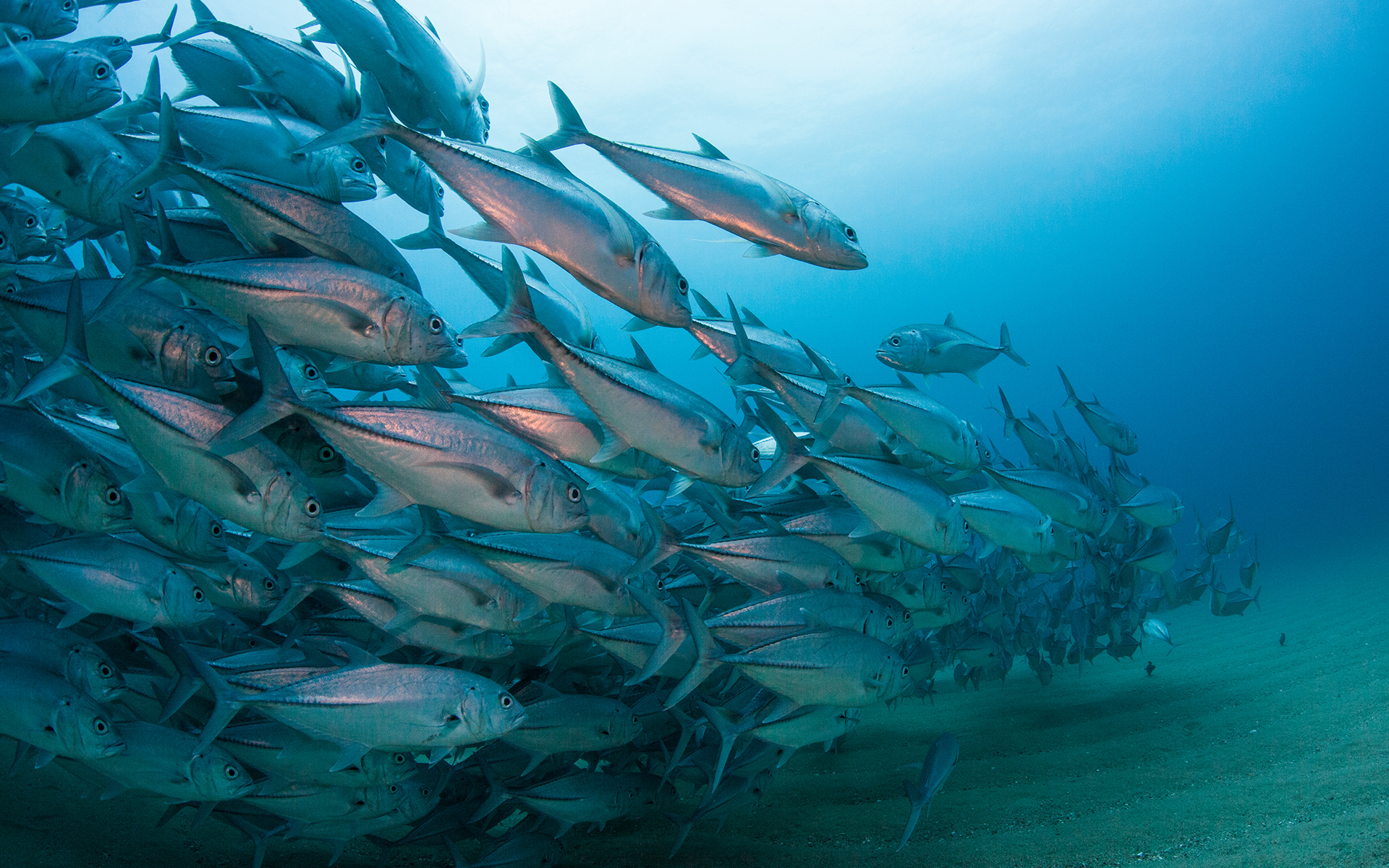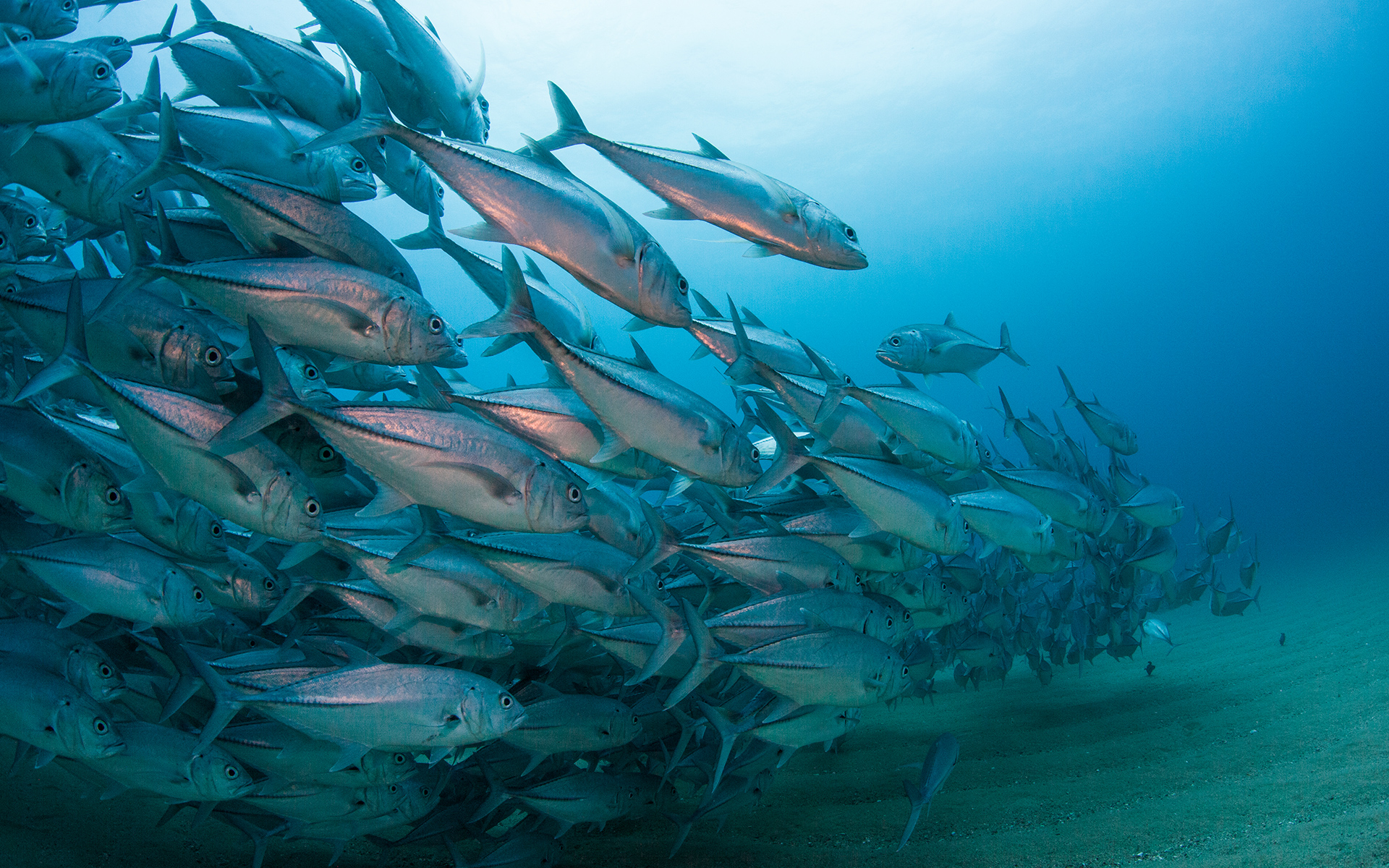

30X30 is a call to action to protect at least 30% of the world's oceans by 2030
30% by 2030
The goal of designating 30% of the world's oceans as marine protected areas (MPAs) by 2030 is reflected in the biodiversity strategy of the EU's Green Deal.
The ocean is one of the most important components of our planet, and therefore also of great importance for the survival of us humans. It is a fragile ecosystem. It is dependent on many factors. One of them is the creatures that call the oceans their home. And protecting them and their natural habitat is our goal. Because this is the only way the ocean ecosystem can be maintained. We are committed to this.
The ocean covers 70% of the Earth's surface and is an extremely complex and diverse ecosystem. As of today, about 7 till 8% of it is defined as MPAs. But not all MPAs are the same. When it comes to species protection, such as with sharks, it is best to have so-called no-take zones, i.e., areas in which fishing is not allowed. Or at least zones in which fishing is strongly regulated and completely monitored. As it stands today, however, fishing continues in most MPAs, making the protection zones ineffective.
The situation in the high seas is even more difficult. It takes up almost two thirds of the ocean, which is about 43 % of the earth's surface. Here we have just 1% MPAs today. While it may not seem like it at first glance, the high seas, which include the deep sea, hold their own fascinating beauties. Many of its inhabitants travel incredible distances or move at unfathomable depths. Be it for food, mating, or for reasons not yet known to man. Whales, swordfish, turtles, and of course sharks are just a few examples. They all play their part in making the ecosystem work. Through the latest technologies, we can trace their paths and analyse their behaviour. This makes it possible to identify suitable areas for conservation.
Currently, according to the Law of the Sea, the high seas are a “common heritage of humankind”. What sounds nice is the reason for the seriousness of the threat that has arisen meanwhile. This wording means that everyone on the high seas is their own worst enemy. The protective regulations that count in the coastal regions of the individual countries now have little or no reach here. Only the specifications and regulations of the fisheries' management organization (RFMO) responsible for the respective sea section apply. If, on the other hand, the areas were protected, this grey area in the rules would no longer exist.
Large-scale and monitored MPAs, near the coast or on the high seas, are vital for the survival of marine life, as they are for humans themselves. They provide areas where marine biodiversity can regenerate and recover, they provide protection for the functioning marine ecosystem, and they ensure that a healthy ocean can continue to contribute to a life-friendly global climate.
The 30% protected areas are a planet-wide network covering all zones of the ocean so that the oceans would be able to recover — in the long term. For this to happen, however, it is urgently necessary for politicians to act. For today, the world's oceans are severely threatened by exploitation, pollution and climate change.
In joint alliances and partnerships, such as the Ocean Flotilla or RISE UP, with many international organizations, we are trying to influence politicians to act and achieve the goal of 30% MPAs in 2030.
